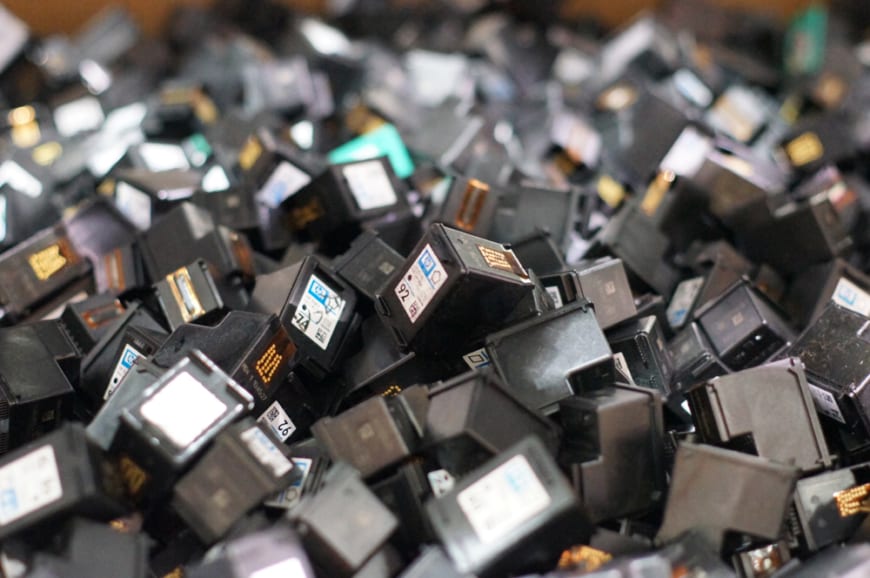Laser marking technology has been praised so many times for its ability to produce highly intricate designs and seamless edges on practically any material. However, there is an often-understated benefit to the technology: it provides a more environment-friendly alternative to current manufacturing practices. More and more manufacturers are adopting the use of laser machines, and these “green” benefits are expected to become even more apparent going forward. How exactly can the technology help manufacturers go green?
No more inks

Traditionally, solvent-based inks are used for labeling as they dry faster and better adhere to various materials. However, the major problem with the use of inks is that neither the solvent nor the pigment used to create the ink is sustainable or biodegradable. Most industrial inks are derived from petroleum products. Moreover, printing processes at an industrial scale inevitably lead to waste generation – something we could all use less of nowadays.
With laser engraving technology, marks are made on the material of the object itself. According to Needhamlaser.com, this solution eliminates the use of ink and reduces our dependency on petroleum products and its non-biodegradable waste. The technology has also become the method of choice for food and medicine products which greatly benefit from the use of a non-toxic labelling alternative.
No need for labeling materials
The process has proven to be an excellent alternative to using stickers and paper labels. According to Marks and Spencer, making the shift to lasers on their fruit and vegetable products has resulted in savings of 10 tons of paper and five tons of glue per year.
On top of the reduction in consumables and waste generation, the technology is also much more reliable and permanent than stickers or paper labels. Stickers are prone to get unstuck in irregular or shiny surfaces, while paper can easily deteriorate when wet. Barring catastrophic damage to the product, branding made by lasers is more or less permanent.
Less waste due to cutting

Laser cutting processes are fully automated and rely on a CAD program to execute their designs. Using CAD, highly precise cuts can be made that maximize the space of the raw material and minimize any waste. This level of precision and consistency is virtually impossible in the hands of a person. By fully automating the process, laser cutting eliminates human error and ensures that products come out perfectly every time.
Less product rejects due to damage
In traditional marking methods such as dot-preen engraving, the product is subjected to repeated impact to achieve a permanent mark. This is not the case for laser technology. This solution offers a is a non-contact process, meaning that the object being printed on does not suffer any unnecessary wear and tear. This can be an important element for the etching of fragile objects such as printed circuit boards, leather, or very thin sheets of wood.
With non-contact technology, industrial processes can enjoy the benefit of much lower product rejection rates. By increasing the yield of industrial processes, there are fewer rejects and, therefore, less waste generated.
Versatile setup

It only takes a few adjustments to shift between objects with different sizes and shapes or designs with different requirements. The same machine can even be used for laser engraving, marking, and cutting. For companies that manufacture a wide range of products, this technology eliminates the need for several setups. This can result in energy savings, not to mention a reduced footprint for the company’s manufacturing facilities.
Summary
Laser technology has the potential not just to revolutionize the manufacturing process, but also help them achieve their goals in a “greener” way.
After all, the modern business mindset is not just concerned with the bottom line. All of us play a role in helping our environment by reducing waste and making a switch to more sustainable technologies. By having manufacturers take advantage of cutting-edge tech, they not only enhance the manufacturing process but also contribute positively to society as a whole.




